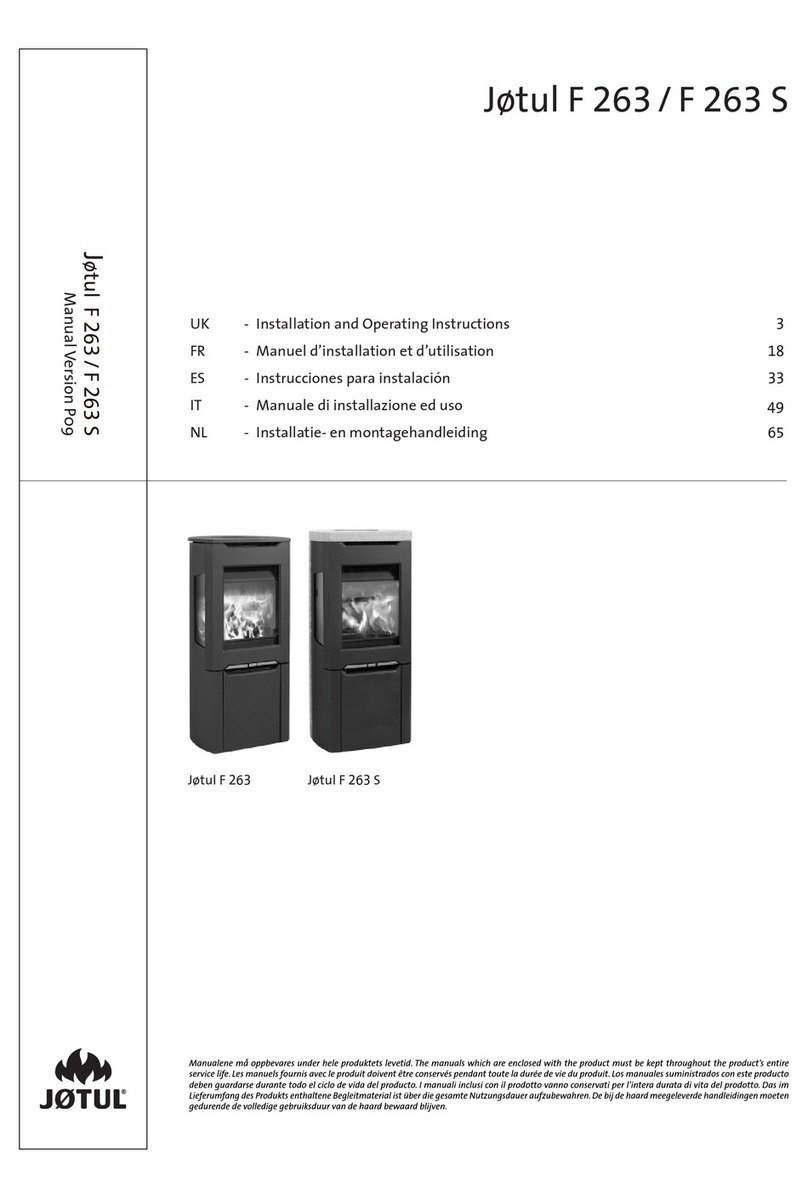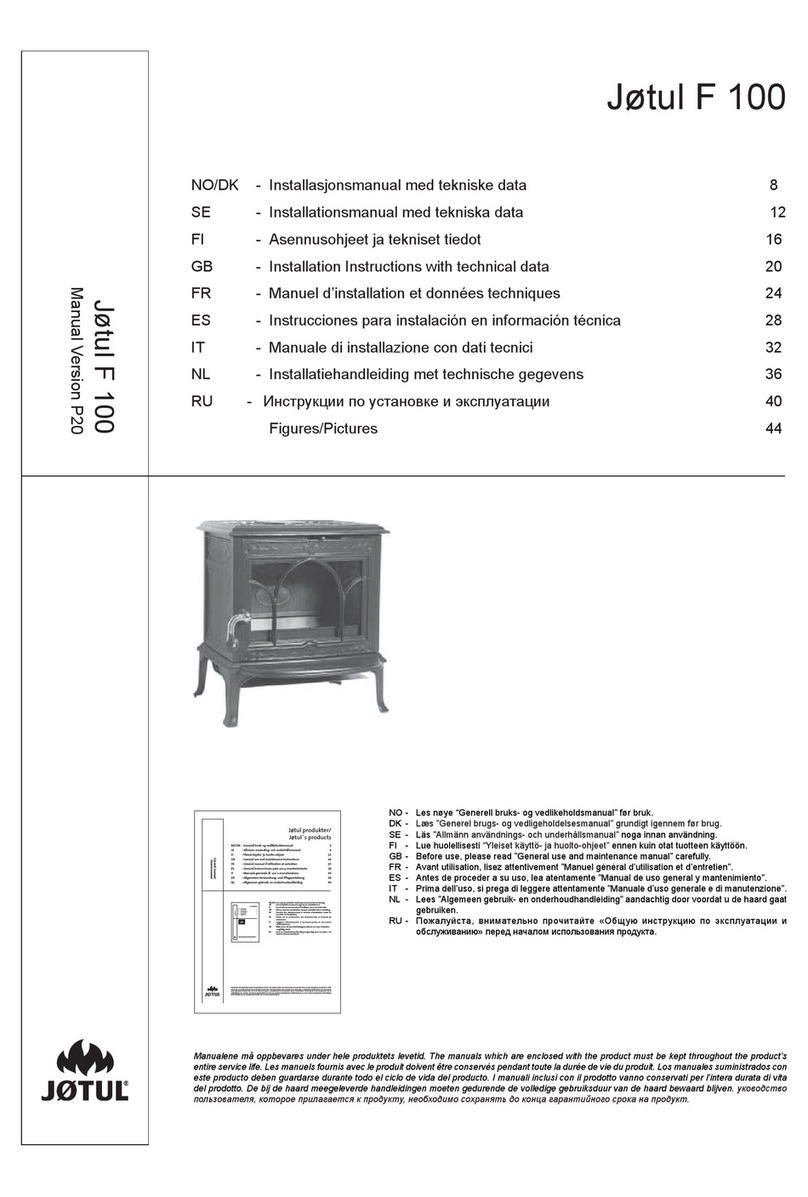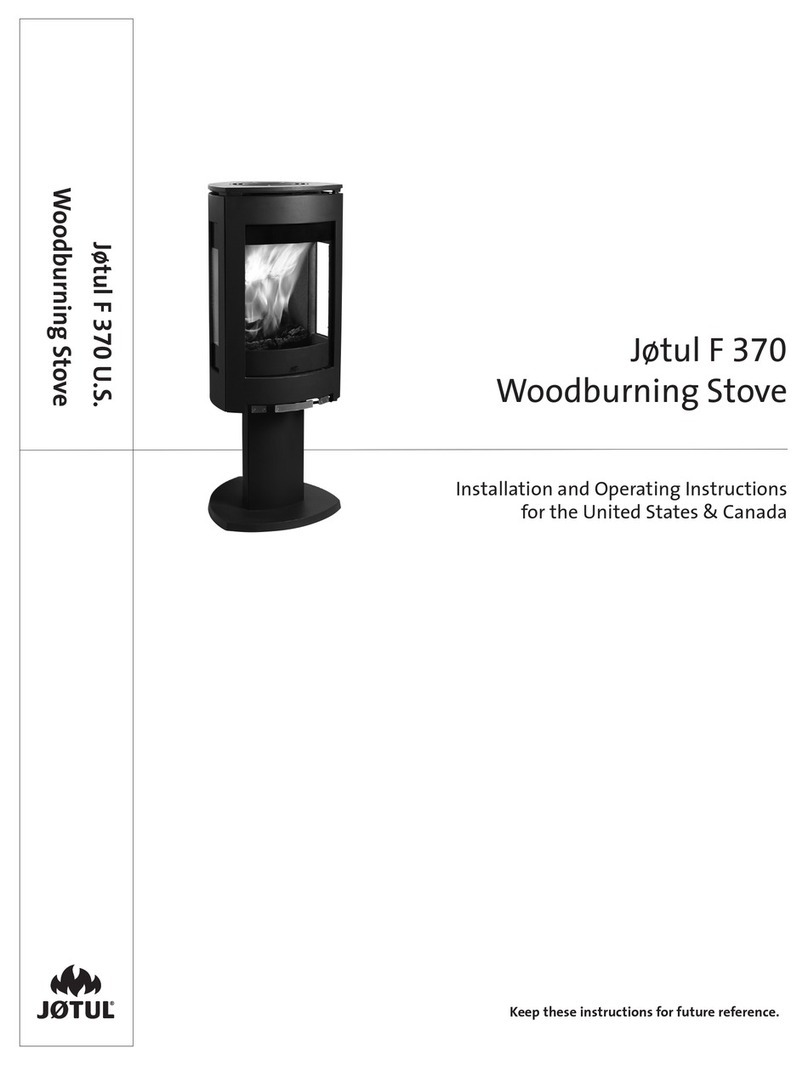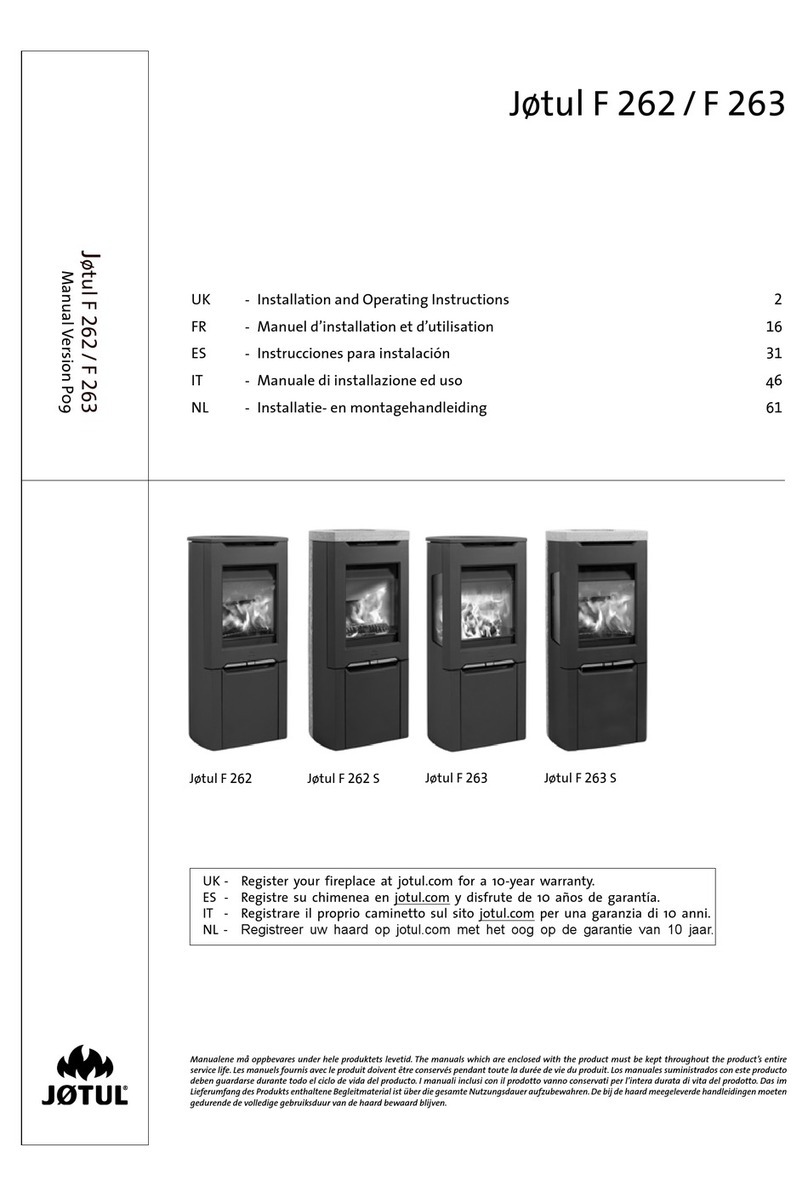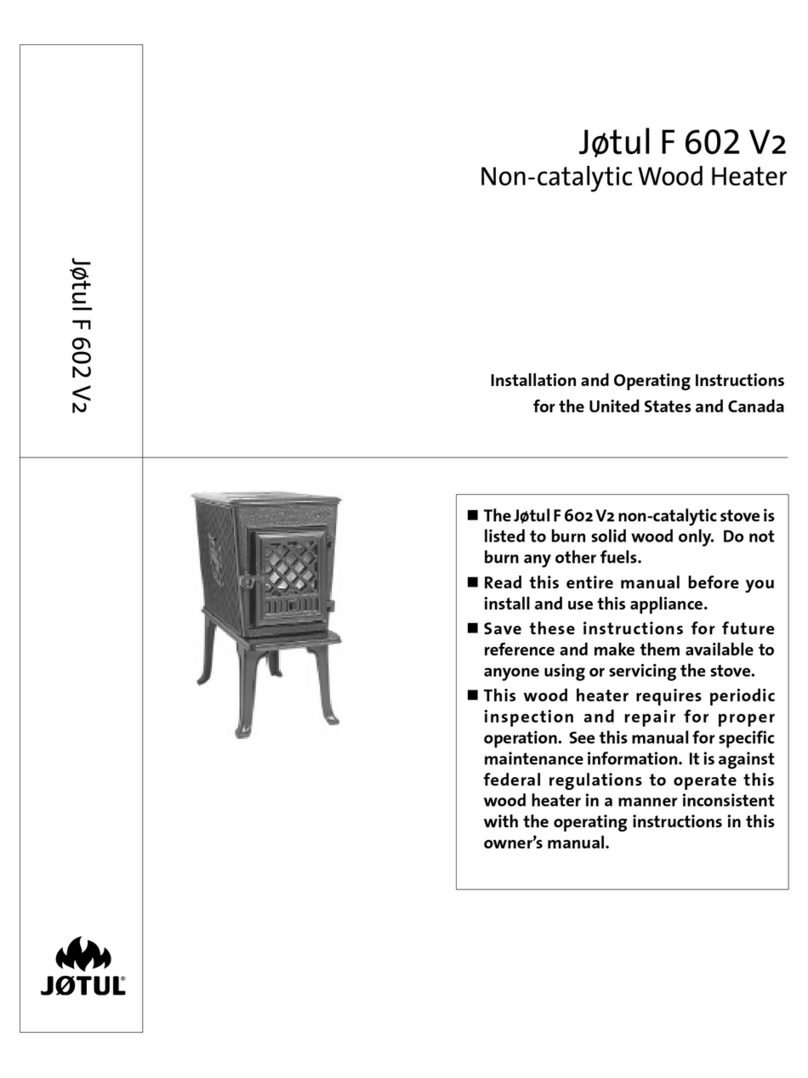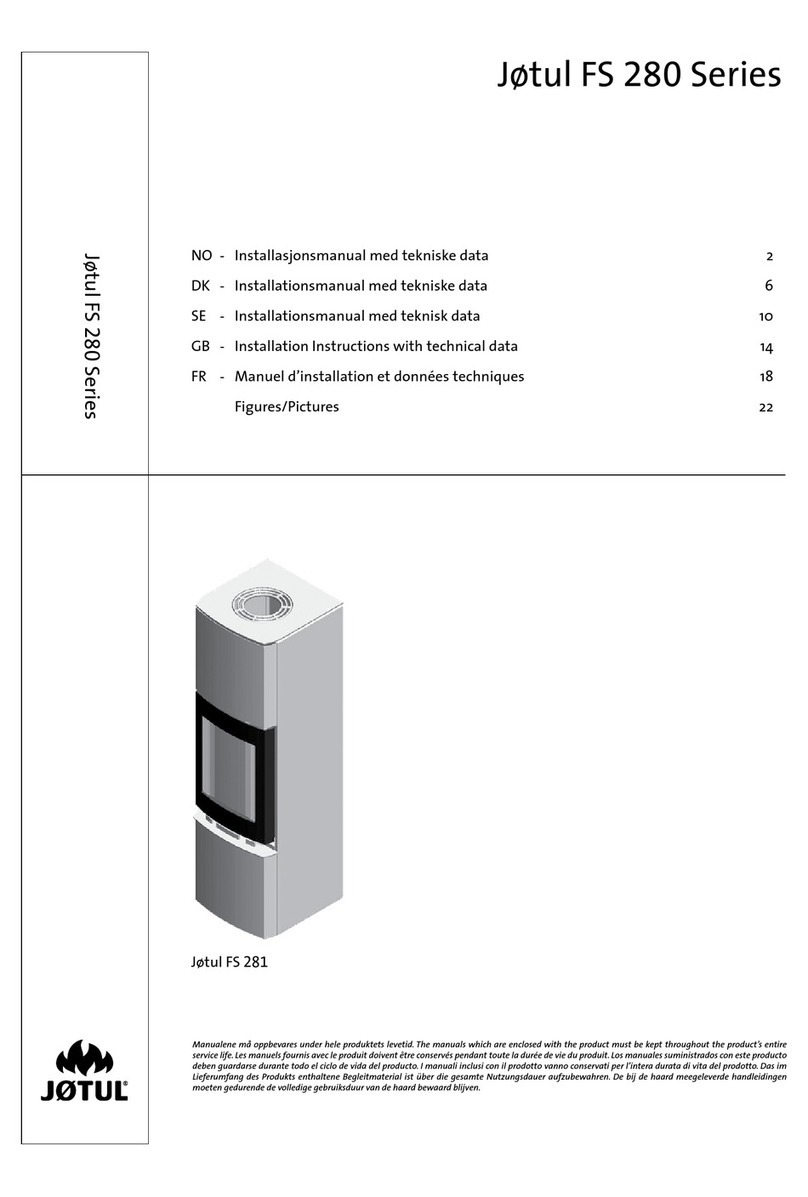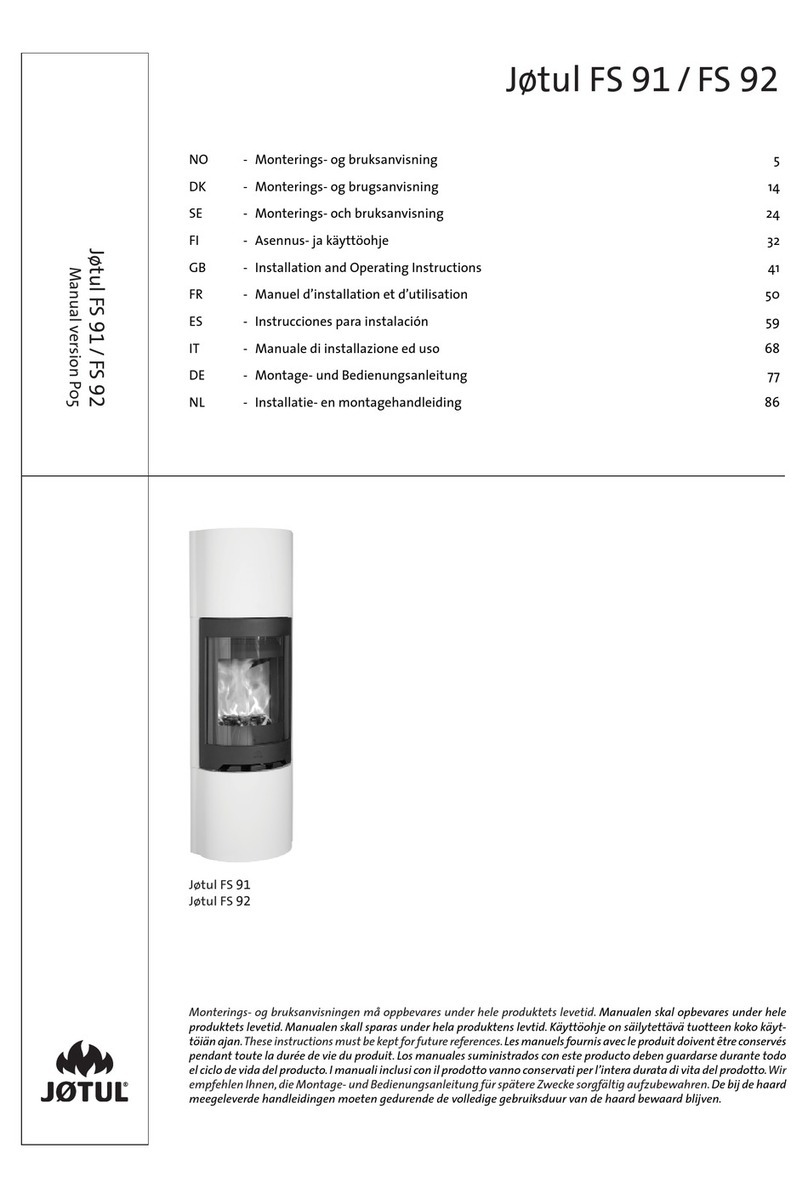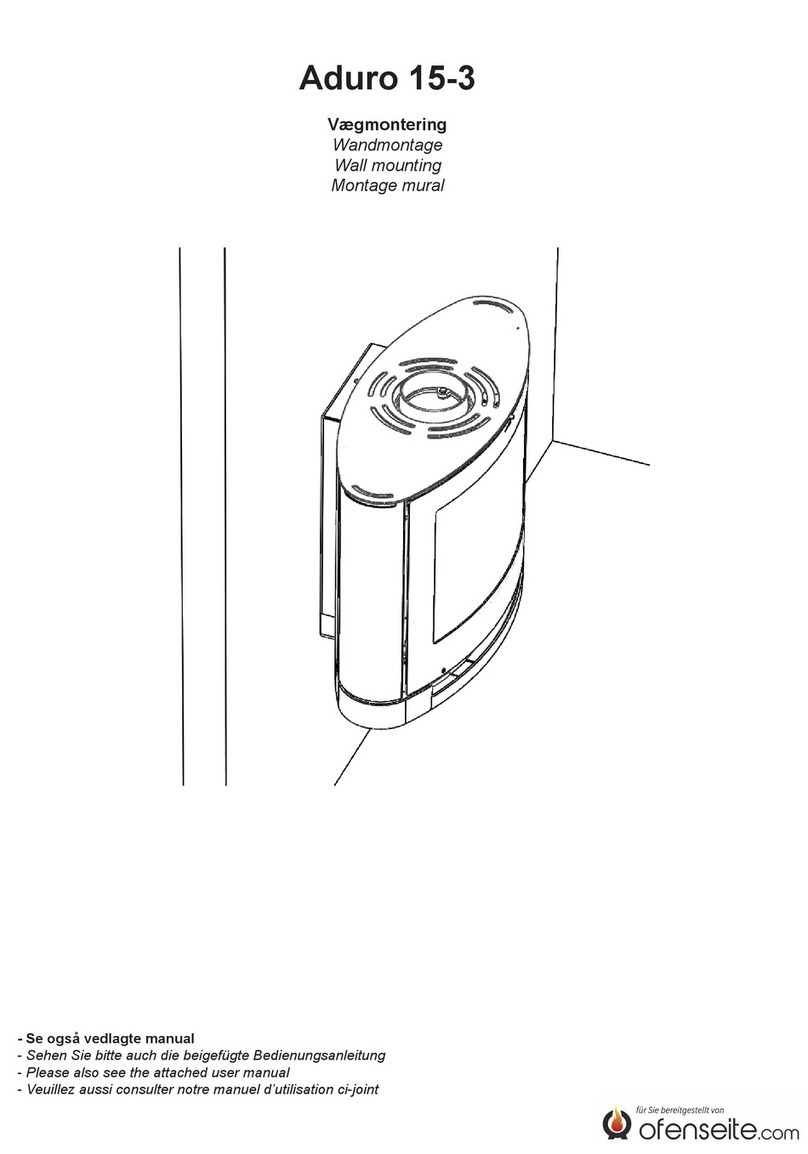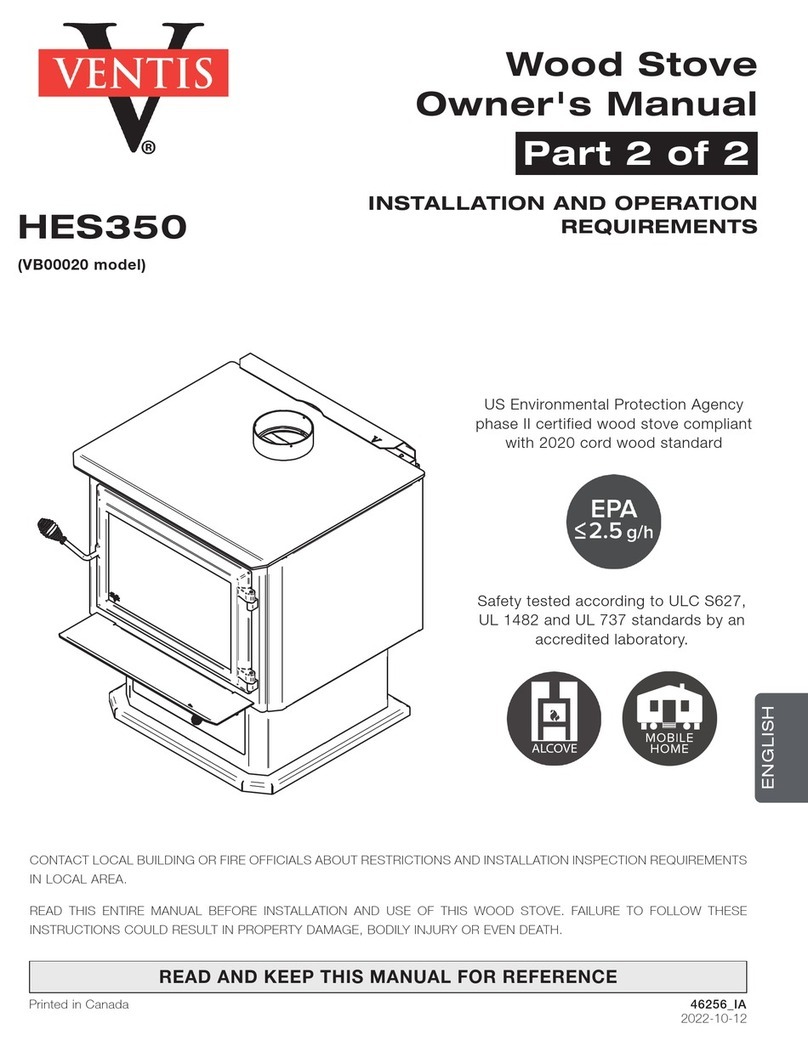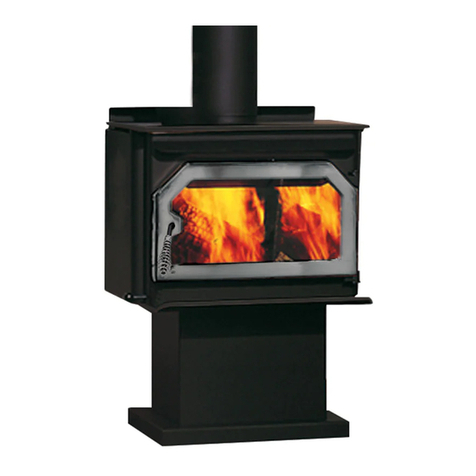4
demands on fireplaces. Therefore, together with the flue
collar, gasketing and hardware inside the sto e, it is
equipped with an extra inspection co er, marked Europe,
which may be throwned away, and a bottom heat shield.
The heat shield is to be used in alco e installations.
Installing the flue collar
To install the flue collar in the top or rear exit position
remo e the tape from the gasketing and adhere to the
groo e on the back of the sto e around the flue opening.
Place the flue collar on the sto e in the top or rear exit
position and secure with the nut, bolt and washer. The
nut and washer are placed on the inside of the sto e.
Stove pipe chimney connector
The chimney connector is a single walled pipe used to
connect the sto e to the chimney. For use with the F 400
Castine the chimney connector must be 6” in diameter,
with a minimum thickness of 24 gauge black steel.
Aluminum and Gal anized steel pipe is not acceptable for
use with the F400 Castine. These materials cannot
withstand the extreme temperatures of a wood fire and
can gi e off toxic fumes when heated.
Do not use the connector pipe as a chimney.
Each chimney connector or sto e pipe section must be
installed to the sto e flue collar and to each other with
the male (crimped) end toward the sto e. See figure 2.
This pre ents any amount of condensed or liquid creosote
from running down the outside of the pipe or the sto e
top. All joints, including the flue collar connection must
be secured with three sheet metal screws to ensure that
the sections do not separate.
For the best performance the chimney connector should
be as short and direct as possible, with no more than two
90° elbows. The maximum horizontal run is 36” and a
recommended total length of sto e pipe should not
exceed 10 feet. Always slope horizontal runs upward ¼”
per foot toward the chimney.
No part of the chimney connector may pass through an
attic or roof space, closet or other concealed space, or
through a floor or ceiling. All sections of the chimney
connectors must be accessible for cleaning. Where
passage through a wall or partition of combustible
construction is desired, the installation must conform with
NFPA 211 or CAN/CSA-B365M, and is also addressed in this
manual.
Do not connect this unit to a chimney flue servicing
another appliance.
Chimney requirements
There are two types of chimneys suitable for the F 400
Castine:
1. A code-appro ed masonry chimney with a flue liner.
2. A prefabricated chimney complying with the
requirements for Type HT (2100°F) chimneys per UL 103
or ULC S629.
The chimney size should not be less than the cross-
sectional area of the flue collar, and not more than three
times greater than the cross-sectional area of the flue
collar.
When selecting a chimney type and the location for the
chimney in the house, keep this in mind: It is the chimney
that makes the sto e work, not the sto e that makes the
chimney work. This is because a chimney actually creates
a suction, called “draft” which pulls air through the sto e.
Se eral factors affect draft: Chimney height, cross-
sectional area (size), and temperature of the chimney, as
well as the proximity of surrounding trees or buildings.
As a result, a short masonry chimney on the exterior of a
house will gi e the poorest performance. This is because
it can be ery difficult to warm the chimney thereby
creating inadequate draft. In extremely cold northern
areas it may be necessary to reline the chimney or extend
its height to help establish draft.
Oppositely, a tall masonry chimney inside the house is
easier to keep warm and will perform the best.
The following guidelines gi e the necessary chimney
requirements based on the national code (ANSI-NFPA
211for the US. And CSA CAN-B365-M for Canada). Howe er,
many local codes differ from the national code to take into
account climate, altitude, or other factors.
Notice: It is important that you check with your local
building officials to find out what codes apply in your area
before installing your new F 400 Castine.
Remember: Your local inspector(s) ha e the final authority
in appro ing your installation. It is always best to consult
them prior to the installation.
Do not connect this stove to any air distribution duct or
system.
Masonry Chimneys
When installing the F 400 Castine into a masonry chimney
you must conform to all of the following guidelines:
•The masonry chimney must ha e a fireclay liner or
equi alent, with a minimum thickness of 5/8” and
USA
